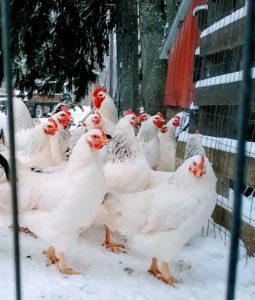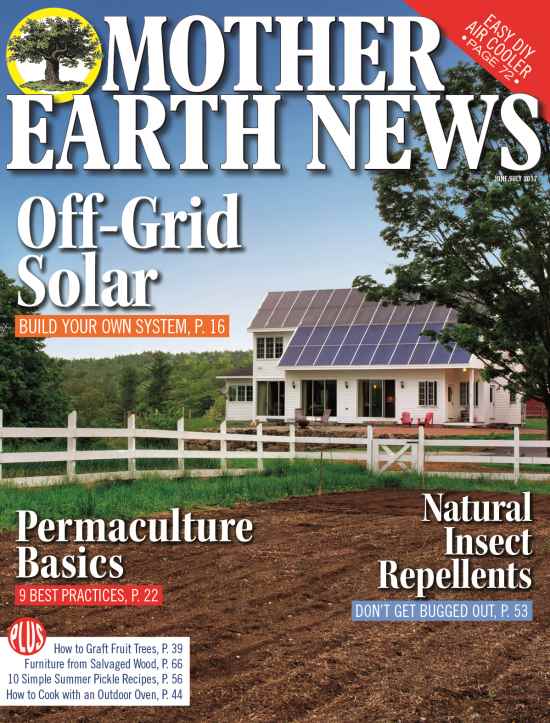I’m getting excited for spring, as we’re about to start hatching season here at Pleasant Valley Farm! Each spring, the poultry help to provide a boost to our income at a time when there are plenty of expenses on the farm. And while I’ve been making a modest income for quite a few years now, I feel that I’ve learned a lot and have made strides to make our hatching endeavors here more successful.
The first step in a successful hatching season is getting eggs. The days are getting longer and I’ve gone from a few chicken eggs per day to dozens, and this will keep increasing as spring gets closer. (We choose to let our hens take a natural winter break and do not use timed lights to get them to lay year-round.) Since I’m now getting a good number of eggs, it means it’s time to separate my flocks to eliminate cross breeding. It is far easier to find buyers for purebred Barred Rocks or Delawares than for mixed breed chickens.

Our flocks are now separated by breed, and we are looking forward to hatching more Delawares soon!
Most of the year, I have more than one breed per pen to cut down on the number of chores I have to do daily. It also allows me to keep all the birds close enough to the farm stand that our visitors can enjoy them. Last year, I was excited to transform an unused part of the sheep house into an extra poultry pen, allowing me a better way to keep birds separated. Since I put smaller groups of birds in there, it actually made sense to cut that space into two runs this year. The birds still have enough room, but now I have space for the Ameraucanas as well as a catch-all for some crossbred birds. This gives me space for four breeds- Ameraucanas, Barred Rocks, Delawares, and some assorted hens with a rooster I lovingly call “the Muppet”- a Silkie-Naked Neck cross. While I try to stay away from crossbred birds for sale, his offspring typically have no feathers on the neck but feathered feet and are so unusual there is a market for them as well.
Now that I’ve moved the chickens around, each hen is with only the rooster I want her to breed with. I typically wait about two weeks to ensure that the eggs will be fertilized by the correct rooster. I’m getting plenty of Barred Rock and Delaware eggs and will be setting them soon. Since they are in the same coop that they live in the rest of the year, they are happy and laying well. The biggest downside to moving the chickens around is that relocating some of the birds to new pens upsets their routine and affects the number of eggs I get. When I move hens, I assume that they will stop laying completely- it can be anywhere from a few days to a few weeks, depending on the breed and age of the hen. Since my Ameraucana hens aren’t currently laying, it was a good time to move them. Hopefully, it will be less of an interruption compared to moving them after they had begun to lay for the spring. It has interrupted the hens I have in the catch-all pen, but since these are the eggs I’m least concerned about setting, that’s ok.
Currently, I’m almost past the waiting period after moving the flocks, I am getting ready to clean, sanitize & turn on our incubator for the year. After a thorough cleaning, I always let the incubator run empty for two days or so to ensure that everything is in proper working condition before setting eggs. I’m also going to dig out the old Styrofoam incubator we started with years ago. We haven’t had luck hatching goose eggs with the chickens, ducks & turkeys in the cabinet incubator in years past. I’m not going to set eggs that have a low probability of hatching, but by using a separate incubator I can up the humidity for them and up my chances of goslings.
We’re also going to try making a few wooden nest boxes in the run-in section of the barn where the geese like to nest. Our Toulouse geese have mixed success hatching their own eggs. One of the problems is that more than one goose will use the same nest, and when they both try to sit it usually means nothing hatches. We’re going to try to encourage them to make their own nests and see if that helps. By setting these boxes where we know they prefer to nest, we hope they will use them. It (in theory) will also help avoid broken goose eggs that get trampled by the cows that use that area to get out of the weather.
Every year, we try to improve what we are doing to make hatching season more successful and more profitable. I’m excited to have more spaces for my small flocks. It’s taken years, but we’ve gone from a backyard/hobby level set up to the equipment and a number of pens that make my poultry breeding operation a success. I am hopeful that we will improve our gosling success rate. I know there is a market for them as each year I’m contacted by people looking to buy. Hatching is something that I enjoy, week in and week out, every spring. It’s a privilege to be able not only to make money raising adorable little creatures but to offer healthy chicks for folks looking to start or expand their own flocks. And as we make more income from the flocks, it allows me to grow what I do. I’ve already got my eye on a few more fancy chicken breeds I’d like to add to our flock!
Want to know more about hatching a profit? Read my posts on what we do, the equipment we use, and why we love heritage breeds!










